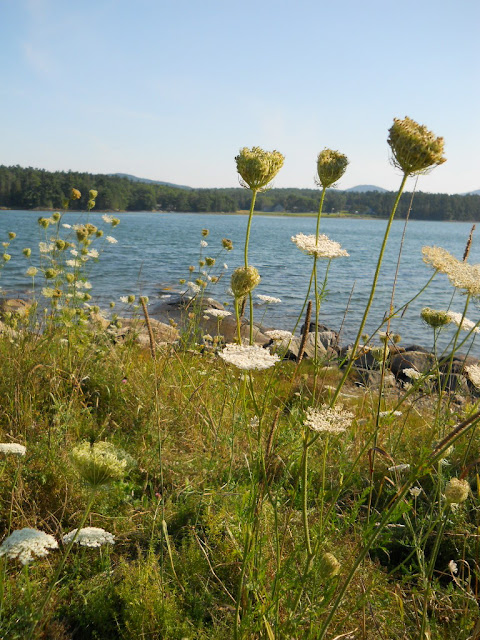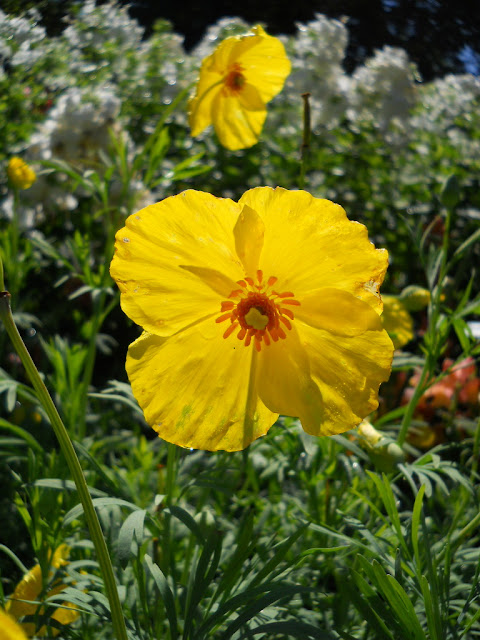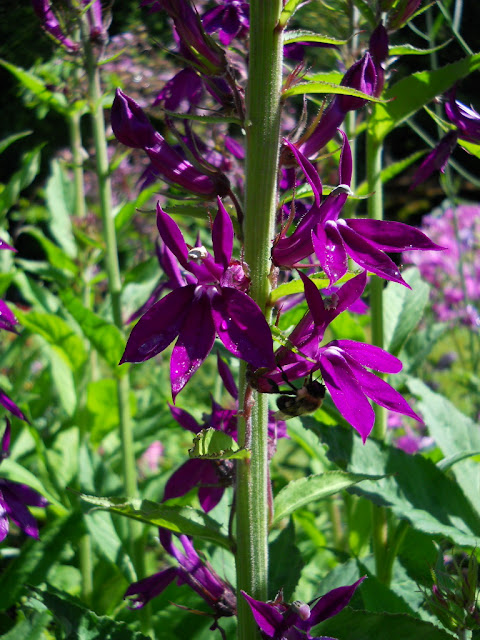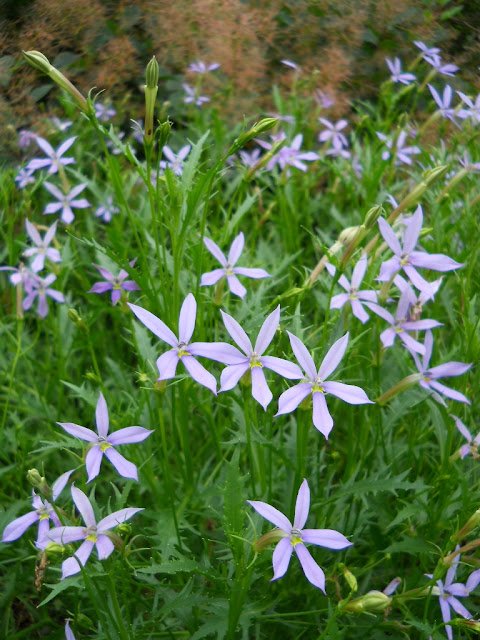The Asticou Azalea gardens were built by Northeast Harbor resident Charles K. Savage, owner of the Asticou Inn. The gardens were started in 1956 when Beatrix Ferrand dismantled her gardens at Reef Point and Savage moved many of Ferrand's beloved specimens here and built the gardens around them. His love of Japanese garden design and native plants inspired the overall design of the garden. The garden can be described as a Japanese Inspired Woodland Specimen garden as there is a fascinating array of plant material, particularly shrubs and trees. As the plants have filled in, there are some areas where evergreens have grown together to create vibrant textured walls, hedges, and mixed ground cover tapestries. These lush, green walls of plant material were very reminiscent of English gardening, which I found particularly exciting.
The Sand Garden
"While this arrangement of sand and stones does not duplicate any known garden, it is similar in size to the celebrated gardens of Ryoanji in Kyoto, dating from about 1480. The sand represents water and the stones islets." Written on a sign post adjacent to the garden.
Cotinus corrygira 'Nordine'
The smoke bush floating above the evergreens.
Water paths! Waterways are heavily featured and the quiet, still reflections add so much to the way we see the garden.
Galax urceolata
I have read about this ground cover particularly in the book Our Life in Gardens, but I have rarely seen it. This was a beautiful stand growing on a shady stream bed. I enjoyed seeing large stands of some of the best woodland ground covers, including Vancouveria hexandra, Epimedium, Clintonia, and Uvularia perfoliata. I would like more stands of the lovely woodland herbaceous plants as it will give more year round interest and more texture and variety to the predominantly shrub garden. Of course this is quite a bias opinion as the woodland herbaceous plants are becoming some of my favorites!
Laurentia axillaris 'Starshine Blue'
Syn. Solenopsis axillaris or Isotoma axillaris
This plant looked like a perennial, but apparently it is an annual here in Zone 4. I did plant a perennial ground cover Isotoma fluviatallis in my own garden and I suppose it has a similar look? This Blue Star flower was planted in front of Cotinus coggygira 'Pink Champagne' which has darling little leaves.
Another completely new plant to me, Chelonopsis yagiharana also known as Japanese Turtlehead. It has that wonderful foxglove look, particularly when in bud.


















































